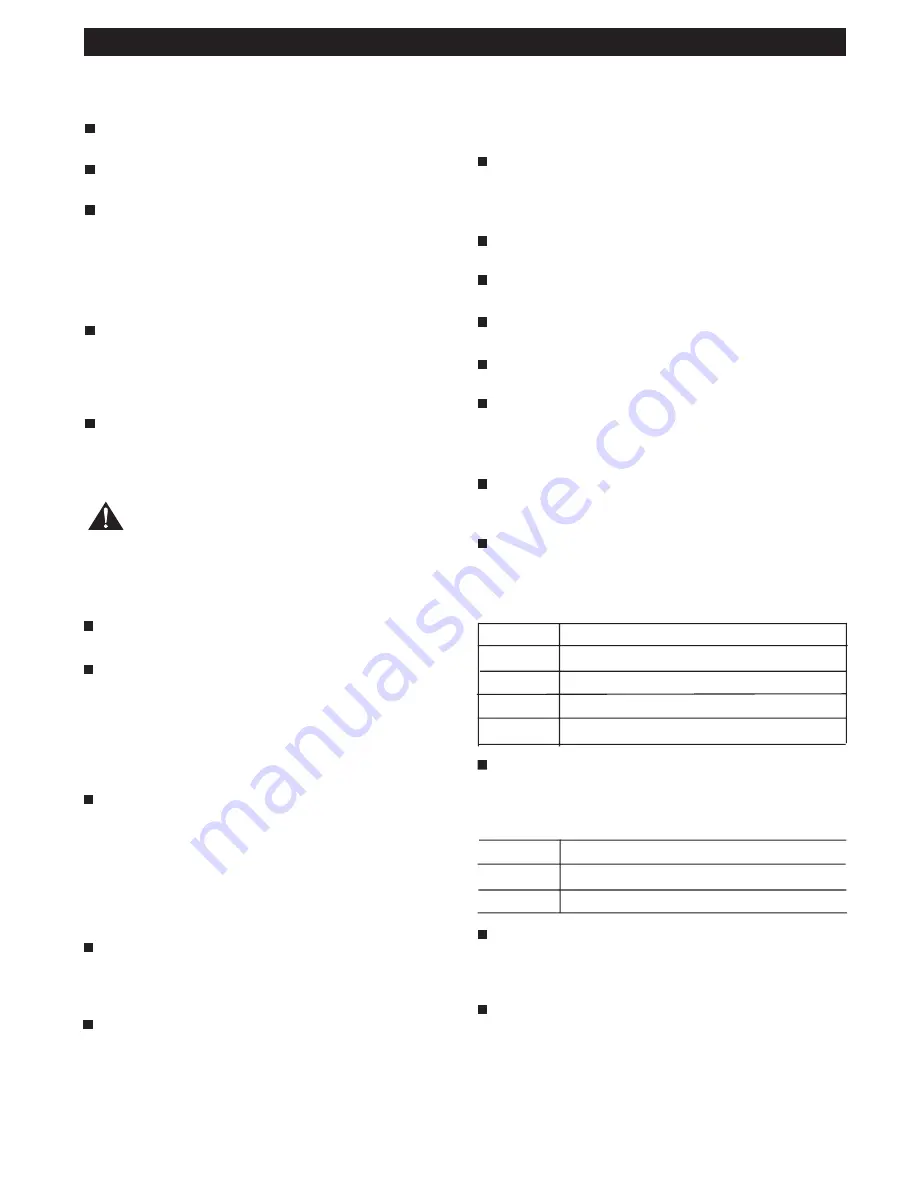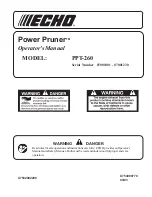
Page 9
ADJUSTMENTS
ATTACHING BLADE ADAPTORS TO PLAIN END
BLADES (Side Cutting)
Adjust one setscrew on each adaptor until it
covers approximately half the hole.(Fig. 5)
Loosen the other setscrew just enough to slide one
adaptor onto each end of the blade as shown.(Fig. 6)
Place the blade and adaptors into the gauge
to set the blade to the proper length as shown,
and securely tighten the other setscrew with the
wrench provided.(Fig. 7)
ATTACHING BLADE ADAPTORS TO PLAIN END
BLADES (Side Cutting
)(Fig. 8)
Remove both setscrews from each blade adap-
tor, thread them into the opposite holes in the
blade adaptor perpendicular to the adjustment
pin, and repeat steps 1,2 & 3 of above with the
blade in the side cutting position.
Cutting from the side of the saw will be necessary
when your workpiece exceeds 405mm in length.
With the blade positioned for side cutting, the
table must always remain in the 0° bevel position.
WARNING:
Do not attempt to cut a bevel with the
blade positioned for side cutting.
REMOVING AND INSTALLING PLAIN-END
BLADES(Fig. 9)
Rotate the blade tension knob anti-clockwise to
release blade tension.
Remove table insert and remove blade from outer
section of the upper and lower blade hold-ers by
pulling forward and lifting the blade and adaptor
through the access hole in the table. Slight
downward pressure against the upper blade
holder may be helpful when removing blade from
upper blade holder.
Install the blade while inserting one end of the
blade and adaptor through the access hole in
the table, and hooking the blade adaptor onto the
outer section of the lower blade holder. Slide top
adaptor onto pin recess between adaptor guard
and outer section of the upper blade holder. You
may need to press down lightly on the upper blade
holder to install the blade.
In order to cut, and avoid uncontrollable lifting of
the workpiece, the teeth of the blade used on the
scroll saw should always point downwards when
installed.
Carefully tighten the blade by rotating the blade
tension knob clockwise just until you feel the slack
in the blade removed. Double check to see that
the adaptors are properly positioned in the blade
holder. Then turn the blade tension knob ONE full
turn clockwise and then replace the table insert.
This amount of pressure is required for most
cutting operations and blades.
MAKING INTERIOR SCROLL CUT(Fig. 10)
One of the features of this saw is that it can be
used to make scroll cuts on the interior of a board
without breaking or cutting into the outline or
perimeter of the board.
Drill a 6mm hole in the board you will use to make
interior cuts.
Place the board on the saw table with the hole in
the board over the access hole in the table.
Insert blade through hole in board, install blade
and adjust blade tension.
Lower drop foot until it just rests on top of the
workpiece and you’re ready to begin cutting.
When fi nished making the interior scroll cuts
simply remove the blade from the blade holders.
MOUNTING THE SCROLL SAW TO A BENCH(Fig. 11)
When mounting this saw to a workbench, a solid
bench is preferable to a plywood bench where
noise and vibration will be more noticeable.
Hardware to mount his saw to a workbench is
NOT SUPPLIED with the saw. However, we rec-
ommend the hardware used be no smaller than
the following.
Quantity Description
4
Hex Head Bolts, 1/4-20 length required
4
Flat Washers, 9/32 I.D.
4
Lockwasher, 9/32 I.D.
8
Hex Nuts, 1/4-20
Soft foam pad to place between your scroll saw
and workbench is NOT supplied with the saw.
However, we highly recommend the use of such
a pad to reduce noise and vibration.
Quantity Description
1
Soft foam pad, such as carpet padding
610mm x 305mm x 12mm
DO NOT overtighten mounting bolts - leave some
cushion in the foam pad for absorbing noise and
vibration.
ATTENTION: When inserting the front right hex
head bolt, it will be necessary to insert hex head
bolt from bottom side of workbench, and secure
with hex nut from top side of scroll saw base.































